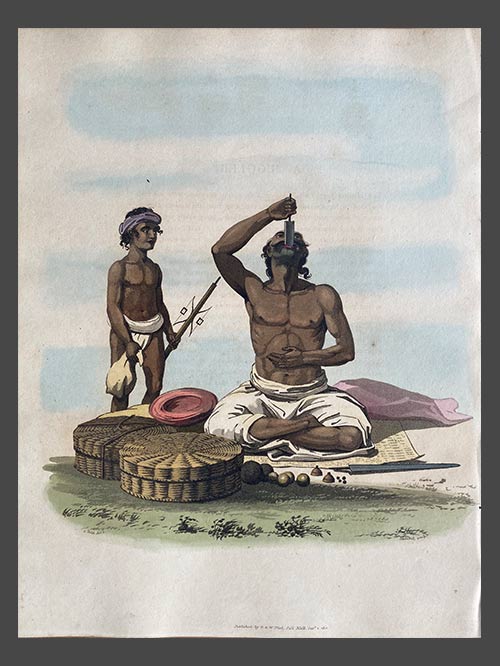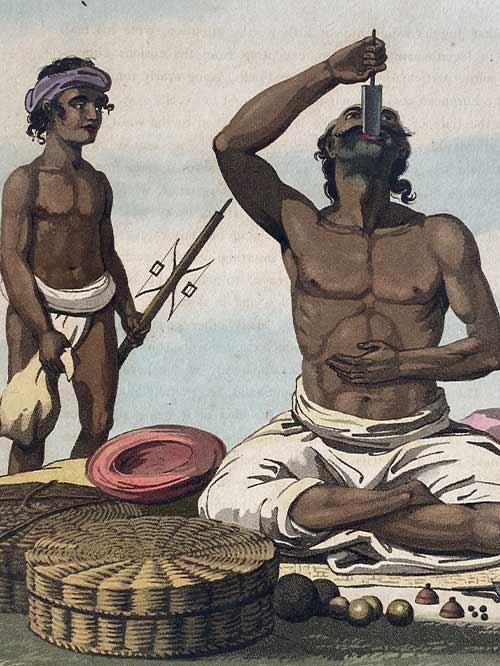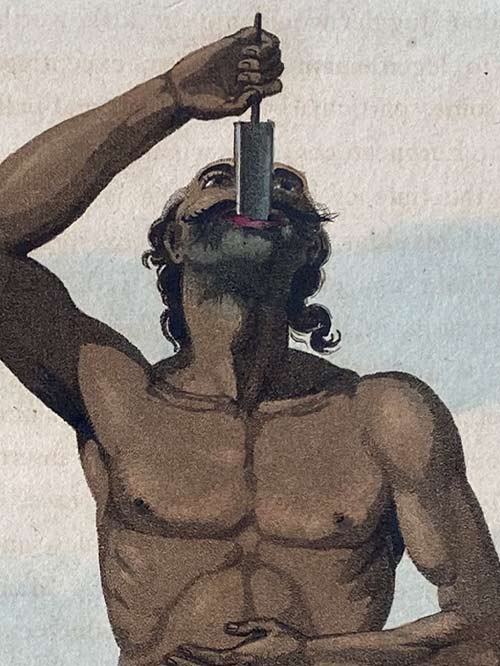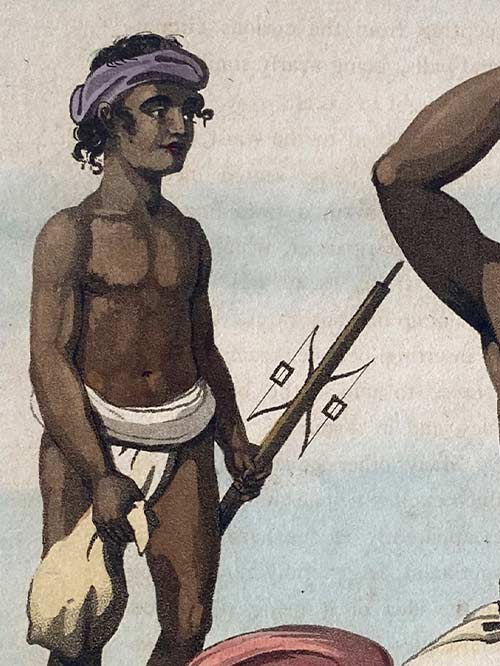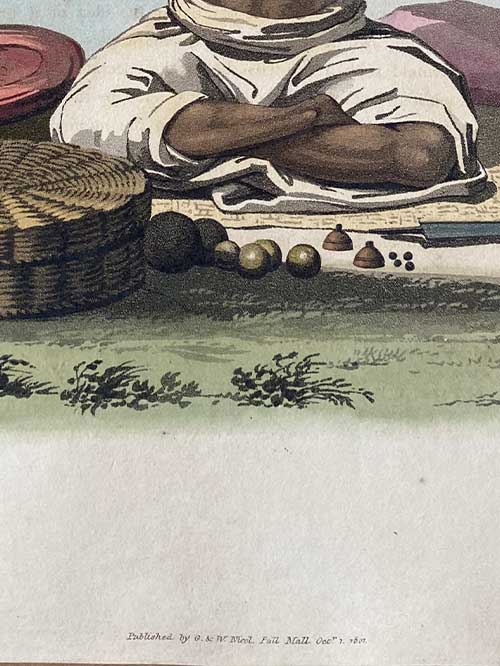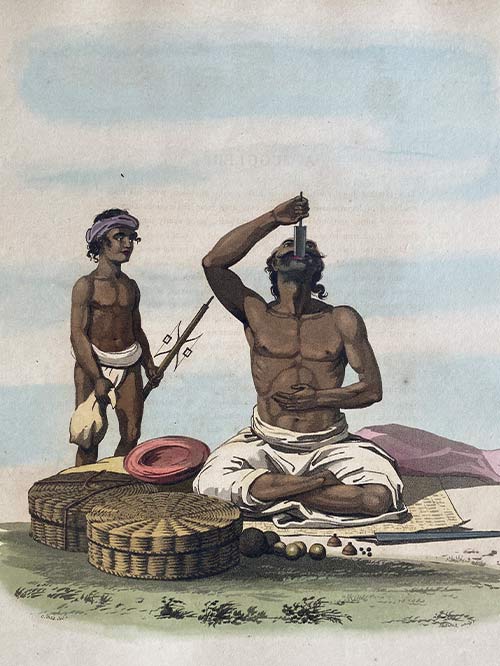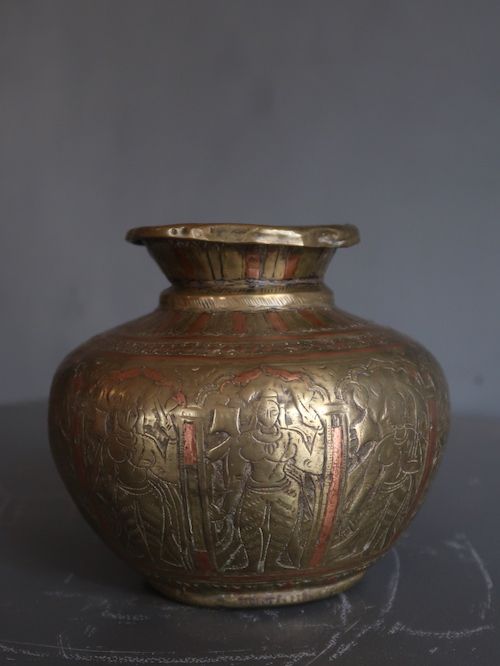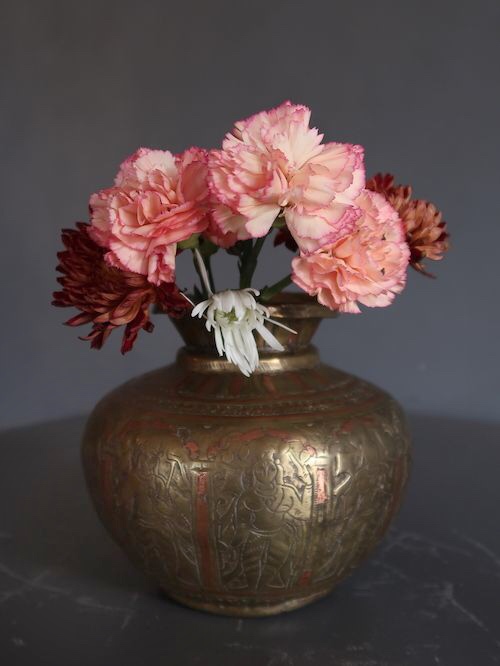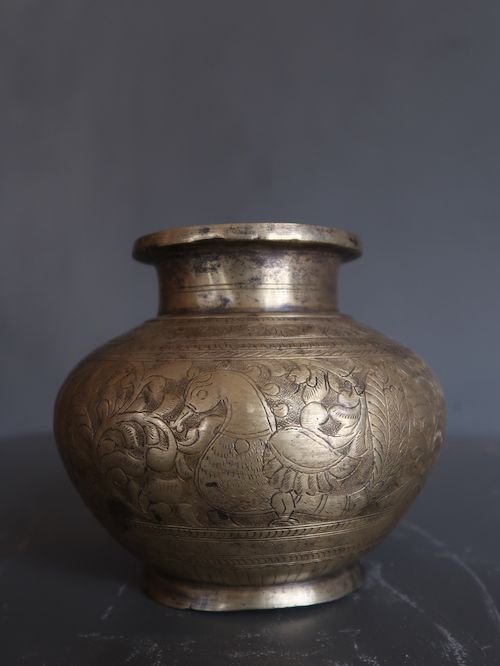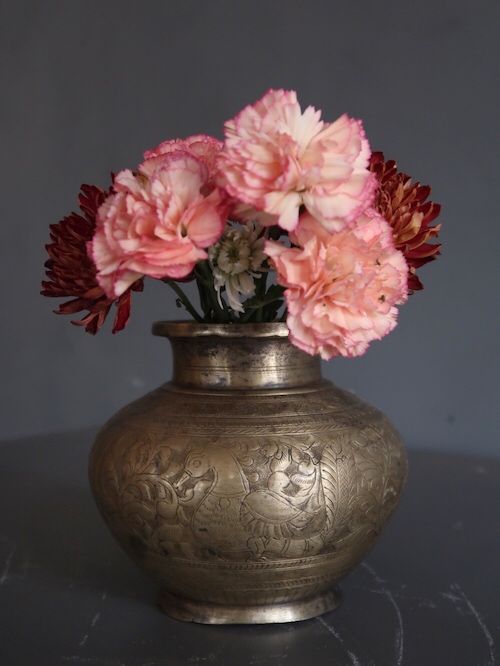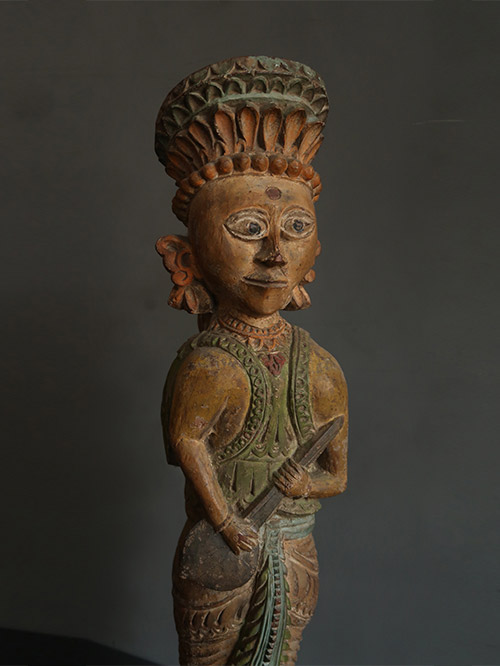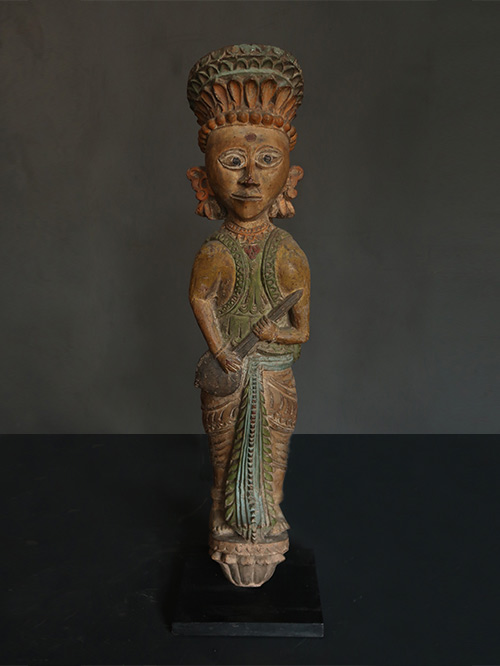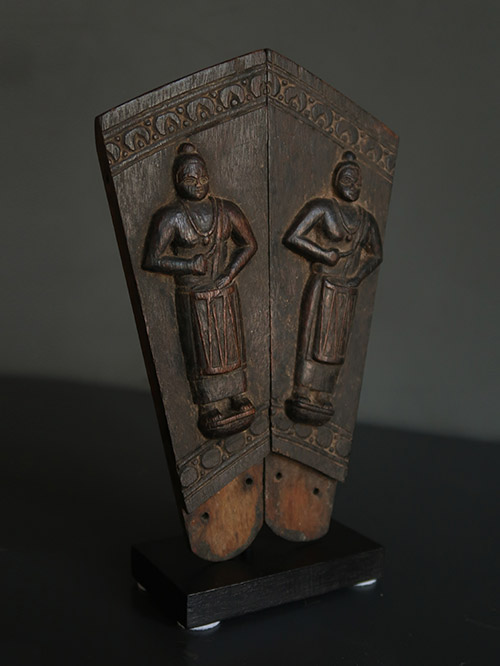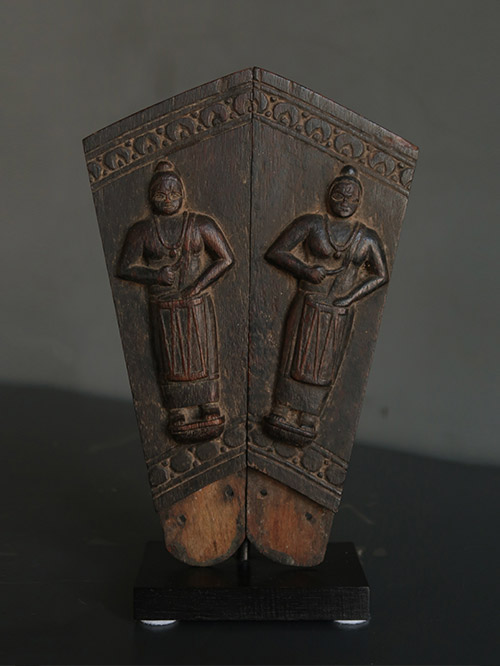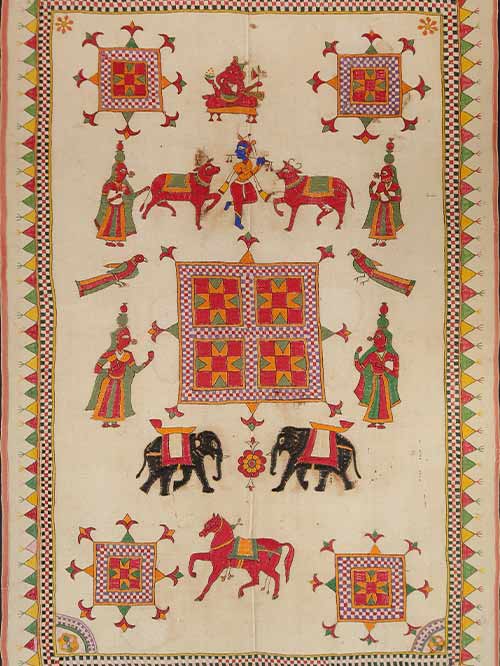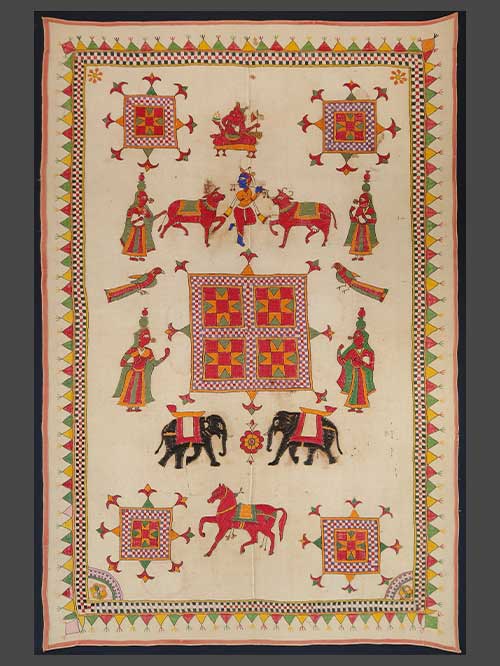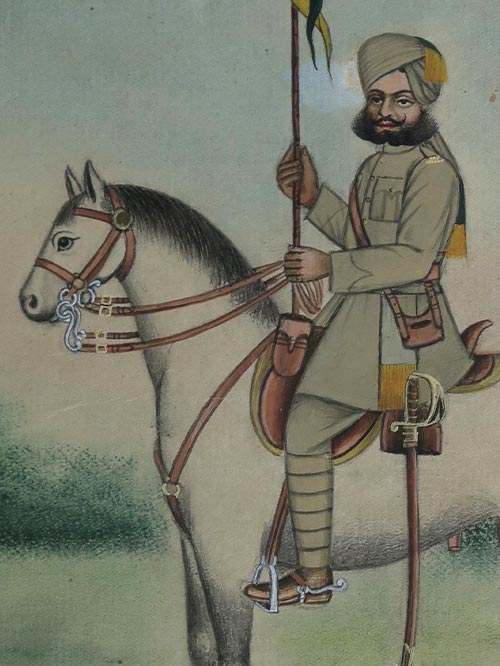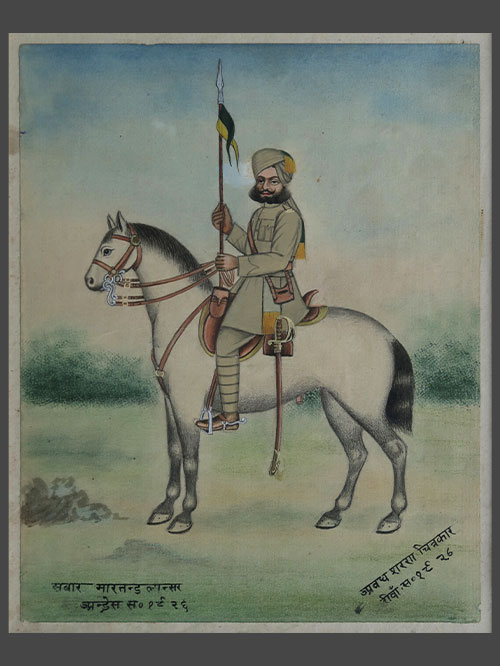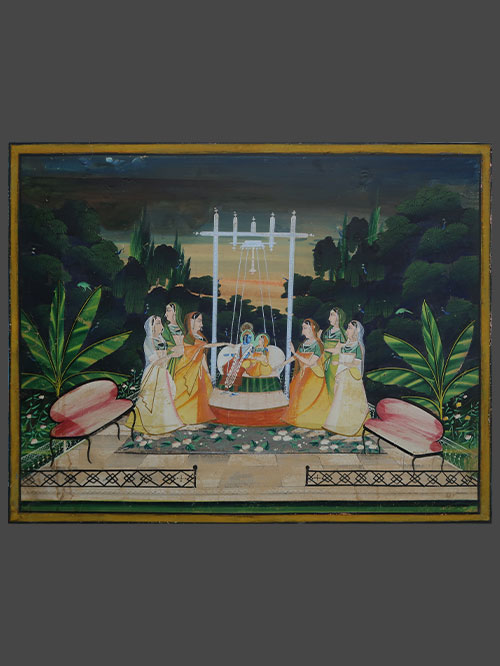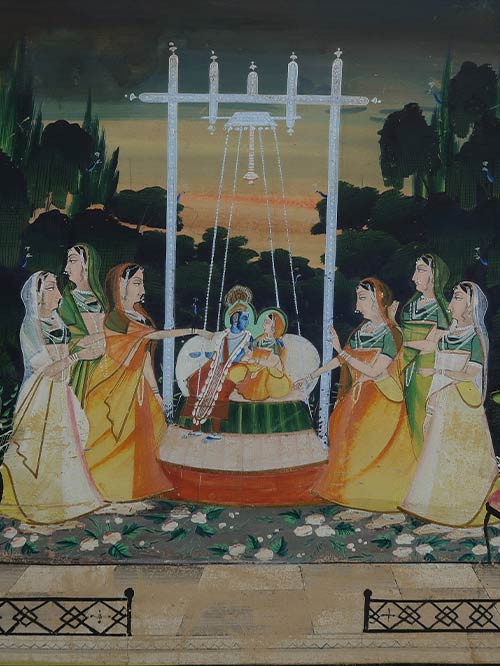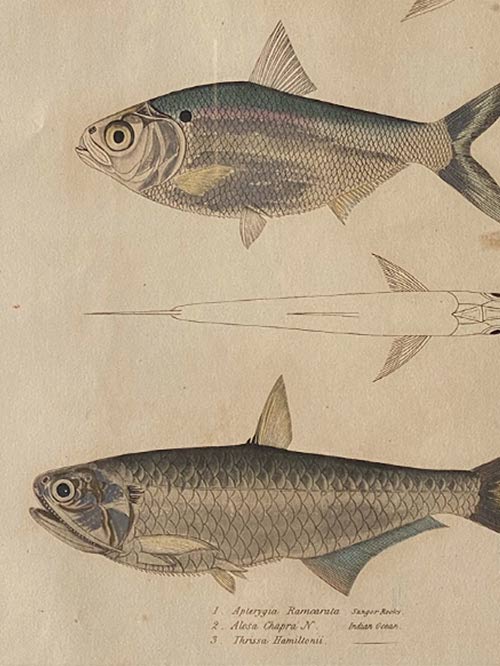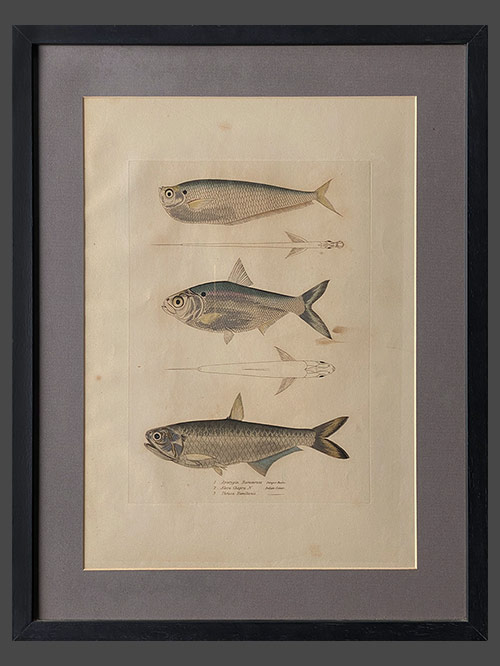Pub. London
original hand-coloured aquatint
Captain Charles Gold (d. 1842) served in the military campaigns against Tipu Sultan, the ruler of the Kingdom of Mysore and during 1791-98 he sketched a series of images later published as aquatints in “Oriental Drawings.” He was fascinated with the concept of religious begging and documented all manners of mendicants and zealots that he met on his travel, often detailing their unique trials and tribulations.While these prints cannot be divorced from the orientalist roots from which they came, they are a compelling visual memoir of a time and people that may have otherwise been lost to time.
Fascinated by his encounter, the artist recounts “the Juggler in the usual attitude of putting the sword-blade down his throat; is seated on a mat, with his cups and balls before him; also two heavy stone balls, which he throws alternately to a great height, and catches on his bare back. The baskets contain his various apparatus, and the little fellow, his son and apprentice, holds a small whirling instrument, which he balances and plays various tricks with. His dress and turban lay on the ground behind. The most surprising of his performances, which consist of various distortions of his person, is to raise by the strength of his eyelids, two baskets containing his apparatus, being of several pounds weight. That which excites wonder in the greatest degree is the swallowing a sword blade, apparently at the hazard of his existence. The practicability of this experiment, is generally doubted by those who have not witnessed it; under the idea of it being performed with a spring sword. He swallowed to the very hilt the blade of a broad-sword, blunted in the edges and point, and about eighteen inches long, which I absolutely felt in his stomach. As may be supposed, the exertion and straining affects the poor fellow a good deal at the time, but a glass or two of arrack or brandy which he never fails to ask for, soon refreshes him.”
Size (cms): 33(H) x 25(W)
Size (inches): 13(H) x 10(W)

